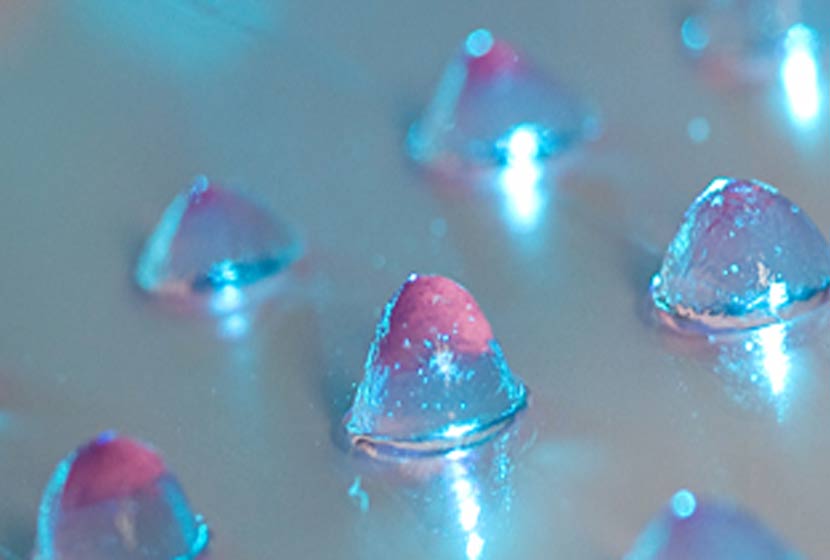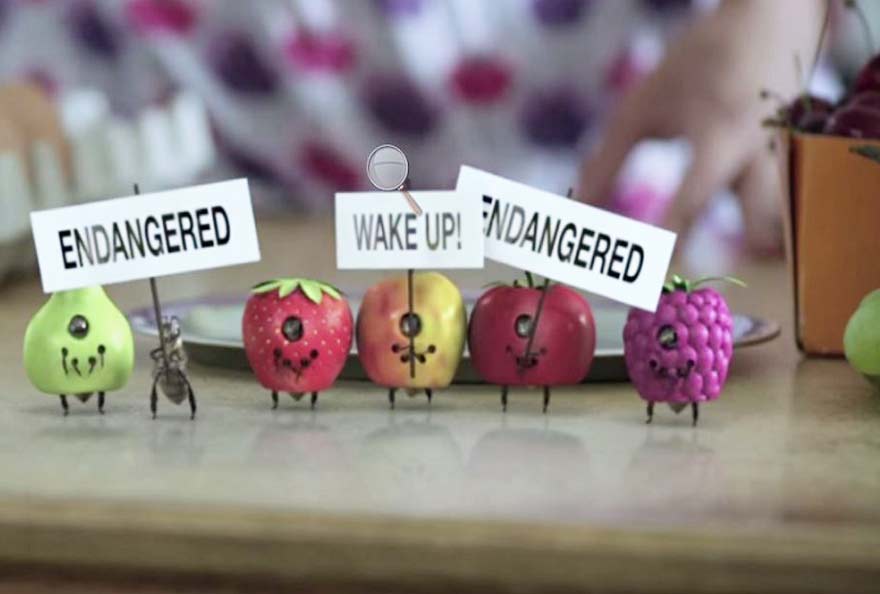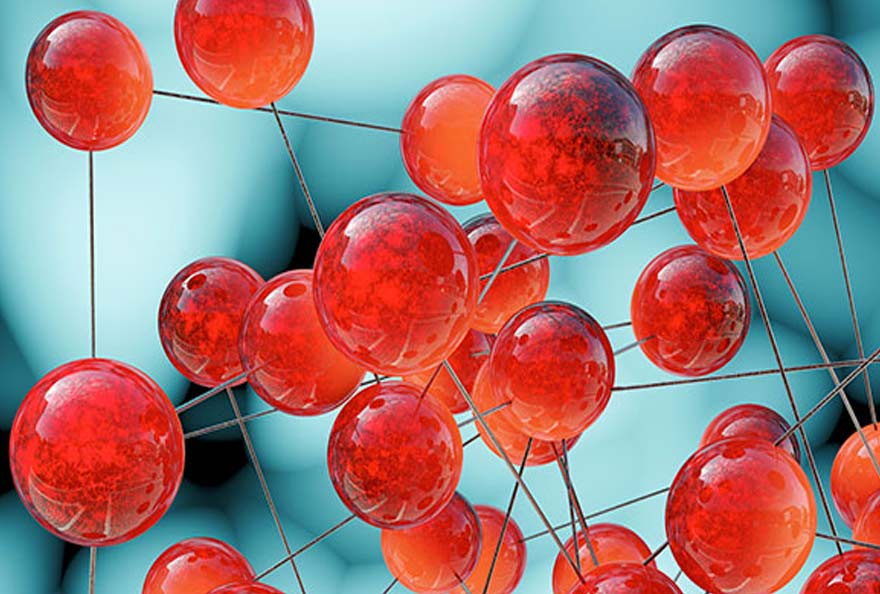Les membranes filtrantes à micropores tendent à se répandre pour fournir de l’eau potable ou dessaler l’eau de mer. Des matériaux filtrants nanostructurés sont envisagés pour compléter ces dispositifs ; par exemple, pour filtrer les résidus de pesticides et de médicaments ou dépolluer des nappes phréatiques. Le gain d’efficacité escompté par rapport aux solutions actuelles d’épuration est-il suffisant compte-tenu du coût des dispositifs ? Quelles sont les méthodes de traitement utilisées ou envisagées ? Quelles sont les voies de recherche ? L’émission de nanoparticules dans l’eau constitue-t-elle une menace pour les écosystèmes aquatiques ou les systèmes d’épuration ? Que sait-on et ne sait-on pas, finalement, des relations entre les nanotechnologies et l’eau ?
Dans le cadre du Forum nanoRESP , s’est tenue le 5 février 2015 une rencontre consacrée aux nanotechnologies et l’eau. C’était au Laboratoire national d’essai (Paris 15e) avec les intervenants suivants :
– Auguste Bruchet, expert en chimie, Centre International de Recherche sur l’Eau et l’Environnement (CIRSEE), Suez Environnement
– Jean-Yves Bottero, Centre de Recherche et d’Enseignement de Géosciences de l’Environnement (CEREGE), Aix-en-Provence
– Catherine Mouneyrac, Institut de Biologie et d’Écologie Appliquée, Université catholique de l’Ouest (UCO), Angers, Equipe Mer Molécules Santé (MMS), Université de Nantes
– José Cambou, Vice-Présidente de l’ORDIMIP (Observatoire des déchets en MidiPyrénées), secrétaire nationale de la Fédération France Nature Environnement (FNE)
– Jean-Luc Laurent (LNE) : Le LNE contribue au débat sur la traçabilité entre le monde nano et le monde macro. Pour cela, nous avons besoin de bien comprendre les points d’intérêt des industriels, desscientifiques et du reste de la société. C’est la raison de notre engagement dans le forum NanoRESP.
Animation :
Dorothée Benoit Browaeys, Rédactrice en chef adjointe UP’ Magazine – Forum NanoRESP
Il faut souligner le caractère original de ce forum, dont le modèle particulier prend la suite d’expériences menées depuis une dizaine d’années, notamment le Nanoforum du Cnam réalisé en 2007 à 2009 sous l‘égide de plusieurs ministères. Le forum NanoRESP constitue un dialogue des parties prenantes ayant comme horizon une préoccupation de vigilance commune pour faire en sorte que l’innovation soit responsable et durable. Les séances sont construites avec un comité de pilotage pluraliste, et le forum est financé par une alliance de partenaires : BASF, EDF, la SMA BTP, l’association des liants hydrauliques (ATILH) et le laboratoire de mesures et d’essais (LNE), qui nous accueille une nouvelle fois.
Il faut remercier les réseaux qui ont relayé les informations : le club nanométrologie du LNE, qui réalise prochainement les 19 et 20 mars une journée formation d’ingénieurs, le réseau C’Nano, la société Nanothinking, et l’association Avicenn. Citons aussi l’entreprise Cordouan Technologies qui s’est manifestée car elle propose des solutions nanotechnologiques pour le traitement de l’eau, qu’elle teste notamment dans le cadre du programme européen Demeau.
A partir du moment où l’on parle de l’eau, on intègre diverses questions de performance d’épuration mais aussi de vigilance quant aux risques que peut faire courir le relargage de nanoparticules dans l’environnement. La thématique de ce soir porte donc des enjeux importants : la demande en eau potable va augmenter alors qu’en même temps la qualité des eaux de surface diminue en raison de pollutions et rejets divers et variés. Une tension va s’installer entre la disponibilité en eau et la demande croissante. Nous allons essayer de traiter les deux aspects : les traitements, notamment ceux que permettraient les nanotechnologies, et les problèmes nouveaux qui apparaissent avec la présence de nanoparticules dans l’eau. Une récente publication de chercheurs brésiliens illustre bien la complexité de ce dernier point (1).
En présence de nanotubes de carbone, la toxicité de pesticides pour un poisson, le tilapia, est quintuplée simplement parce que les nanotubes jouent un rôle de transporteurs des molécules de pesticides. On ne peut donc traiter les effets séparément. Les « effets cocktails » doivent être pris à bras le corps.
Auguste Bruchet : Le point de vue de Suez Environnement sur les nanos
Suez Environnement a participé à plusieurs projets financés par l’Agence nationale de la recherche (ANR) sur la question des nanotechnologies, au côté du BRGM par exemple.
L’entreprise a deux activités principales : le traitement de l’eau potable et des eaux résiduaires, et la collecte et le traitement des déchets. Je vais me focaliser ici sur le
traitement de l’eau potable.
Des fleuves comme la Seine – qui sert à approvisionner en partie la région parisienne en eau potable – transportent beaucoup de matières en suspension. Le premier objectif du traitement est donc d’éliminer ces matières par une étape de clarification ; elle s’effectue en ajoutant à l’eau un coagulant, des sels de fer ou d’aluminium, qui entraîne les matières dans un décanteur. Pour parachever la décantation, on filtre le résidu sur sable.
Toutes les grosses usines ont en outre un couplage ozone et charbon actif qui suit la clarification. L’ozone élimine chimiquement les odeurs et les micropolluants ; le charbon actif adsorbe et fixe physiquement les micropolluants qui ont passé l’étape d’ozonation. Les usines les plus sophistiquées, soit quelques dizaines en France, ajoutent des techniques de filtration membranaire. Suez (via la Lyonnaise des eaux) utilise de l’ultrafiltration, alors que Veolia utilise la nanofiltration. Pour l’eau de mer, la technologie par dessalement par osmose inverse (sur membrane) avec une taille de spores encore plus petite est en plein boum.
Que deviennent les nanoparticules pendant l’étape de clarification ? Un projet ANR a été mené sur des nanoparticules de silice (SiO2). Si l’on compare les eaux résiduaires (raw water) et les eaux traitées (treated water), on voit qu’elles sédimentent dans le décanteur car elles ont tendance à s’agréger. On sait aussi qu’un métal comme le titane est bien éliminé par le système de décantation des eaux résiduaires.
L’ozonation, qui oxyde des matières organiques dissoutes, n’a pas d’influence sur les nanoparticules sauf celles de C60 (fullerènes). Celles-ci conservent leur structure en cage mais se dotent d’atomes d’oxygène qui rendent la molécule plus polaire, plus soluble dans l’eau. Cela va-t-il faciliter leur passage à travers les filtres de charbon actif, qui préfèrent retenir les composés apolaires ? C’est possible.
Le charbon actif, l’étape suivante, est un matériau microporeux qui peut éliminer les nanoparticules grâce à la taille de certains pores mais en laisser passer certaines, tout en retenant les molécules apolaires comme le noir de carbone.
Suez Environnement a testé des matériaux membranaires modifiés avec des structures nanostructurées, qui pourraient être plus efficaces que le charbon actif pour éliminer des nanoparticules ou les résidus de médicaments. A ce stade, le risque de relargage de nanos freine le développement de cette approche. L’utilisation de matériaux filtrants nanomanufacturés est envisagée dans le cadre de projets de recherche pour l’élimination de composés réfractaires ou la remédiation de nappes ou sols pollués.
Jean-Yves Bottero : Applications de nanotechnologies pour le traitement in situ des eaux souterraines
Je voudrais présenter un exemple de traitement in situ d’eaux souterraines polluées. Ce traitement a été expérimenté dans le cadre du projet Nanofrezes financé par l’ANR de 2010 à 2012. Nanofrezes rassemblait le CEREGE (3), l’université Paul Cézanne d’Aix-Marseille, une société tchèque sous-traitante, Aquatest, SERPOL, entreprise spécialisée dans la dépollution, Hyphen consultants, l‘Ineris et le CNRS.
L’objectif du projet était de développer et d’expérimenter des nanoparticules de fer zérovalent (NPFe0, ou NZVI) aptes à être injectées dans des nappes souterraines grâce à leur petite taille. Le fer zéro-valent est en effet connu pour réduire chimiquement des solvants chlorés tels que le dichloroéthylène (DCE) et le trichloréthylène (TCE). Ces solvants largement utilisés comme nettoyants et dégraissants, contaminent les eaux souterraines de plusieurs milliers de sites, majoritairement industriels, rien qu’en Europe. On utilise classiquement le fer zéro-valent sous forme de particules microscopiques ou macroscopiques intégrées dans des barrières perméables.
Lorsque les NPFe0 s’oxydent en oxyde de fer, elles peuvent réduire le TCE ou le DCE en éthane ou en éthylène. Une transformation intermédiaire donne en revanche du chlorure de vinyle dangereux et cancérigène.
Le premier problème à résoudre était celui du transfert des NPFe dans le sédiment. En effet, les interactions physiques entre les nanoparticules et les ions présents dans le sédiment limitent leur transport par migration. Pour diminuer ces interactions, on modifie la surface des NPFe0 en les enrobant d’acide polyacrylique (polyacrylate), par exemple.
Nous avons testé ces particules enrobées sur une source de contamination des eaux d’un site industriel du Sud de la France. Ces essais ont mis en évidence un taux de transfert augmenté jusqu’à 5 mètres autour du point d’injection et une élimination du TCE en 34 jours (un délai plus long que sans enrobage). Il est donc possible d’obtenir un rayon d’injection non négligeable tout en maintenant la réactivité des NPFe0. Par ailleurs, la sélectivité des NPFe0 pour les polluants chlorés est bonne.
Quant à l’écotoxicité de ces nanoparticules, elle ne parait pas préoccupante. L’injection de 0,5 à 1g/L de NPFe0 induit un risque faible pour les micro-organismes aquatiques. A partir de 0,1 g/L, il est négligeable. Et enfin, le problème se pose peu ici puisque l’on est sur des sites fortement contaminés. La mobilité des nanoparticules est insuffisante pour qu’elles puissent se diffuser en aval du site d’injection. En revanche, par rapport aux barrières perméables contenant du fer zéro-valent, l’injection de NPFe° induit une réduction de la diversité bactérienne, dont les bactéries sulfato-réductrices, ce qui demande des investigations complémentaires.
En conclusion, cette méthodologie se développe assez lentement en Europe pour des raisons de coût. L’intérêt est son efficacité forte sur la source de contamination sur une distance de quelques mètres.
Discussion sur les deux premiers exposés
Dorothée Benoit Browaeys : Le rapport bénéfices risques de ces particules de fer est-il suffisamment démontré ?
Jean-Yves Bottero : Le bénéfice me semble important compte-tenu du nombre élevé de sites contaminés par des composés potentiellement dangereux (7).
NDLR : Une synthèse sur le rapport bénéfices-risques de l’utilisation des NPFe0 a été publiée en 2014 dans le cadre du projet européen NanoRem (Nanotechnology for contaminated land Remediation in Europe and beyond) qui regroupe 28 partenaires de 13 pays, dont en France le BRGM et le CNRS. Elle conclut que la positivité de ce rapport n’est pas encore démontrée clairement. Le projet NanoRem va donc continuer à explorer cette méthode.
Caroline Kim-Morange, journaliste : Les nanoparticules, quand elles s’oxydent, perdent-elles leur côté nanométrique ?
Jean-Yves Bottero : Sur le temps court, non, mais elles évoluent en se transformant en oxydes de fer tandis que le chlore est réduit en chlorures.
Dorothée Benoit Browaeys : Avez-vous des points de comparaisons avec les méthodes classiques ? Y a-t-il d’autres polluants qui peuvent être ciblés ?
Jean-Yves Bottero : La comparaison avec les barrières montre que la technique nano est intéressante économiquement si l’on traite la source de contamination. Le marché » français va probablement se développer pour les sites où l’on ne peut utiliser de barrières perméables et où l’on veut traiter la source. Pour l’instant, en France, cette technique a été employée surtout pour les molécules chlorées. Des essais complémentaires ont montré la capacité des NPFe0 enrobées de réduire des métaux, comme le chrome VI en chrome III.
Caroline Pétigny, BASF, membre du Copil : Pour revenir au traitement de l’eau potable, qu’est-ce qui reste comme nanoparticules à la fin du processus de filtration ?
Auguste Bruchet : Dans notre analyse, nous ne sommes pas allés au-delà de l’étape de clarification. Même si celle-ci élimine 90 % du dioxyde de titane (TiO2) ou de la silice (SiO2), on ne sait pas ce qu’il adviendrait des 10 % restants. On pense que le charbon actif laissera passer un certain nombre de particules en raison de la taille de ses pores.
Frédérique Parrot, Sanofi : Des études ont-elles été faites sur les médicaments présents dans l’eau ? Peut-on imaginer un kit d’urgence avec des nanotechnologies dédiées à la filtration de ces résidus ?
Jean-Yves Bottero : Je ne pense pas, car la mise en œuvre du procédé utilisant des nanoparticules de fer n’est pas aisée.
Auguste Bruchet : A ma connaissance, il n’y a pas de nanotechnologie dédiée aux médicaments présents dans l’eau. Pour l’instant on essaie déjà d’observer quelles quantités de médicaments passent dans les eaux de surface et souterraines à partir des eaux résiduaires avec les procédés d’épuration classiques. D’après ce que l’on sait, ce qui sort comme doses de médicaments des stations d’épuration n’est pas forcément dangereux pour la santé car ce sont la plupart du temps des doses inférieures au nanogramme par litre. Le secteur de l’eau est « drivé » surtout par la règlementation. N’oublions pas que ce qui a conduit à développer les filtres à ozone et à charbon actif, c’est la directive européenne eau potable avec notamment le paramètre de 0,1 microgramme/L de pesticides. Ces technologies sont également efficaces pour éliminer la plupart des médicaments. Tant qu’il n’y aura pas de règlementation demandant l’absence de médicaments dans l’eau potable, les distributeurs d’eau ne feront pas l’effort financier pour mettre en place des systèmes complémentaires pour les quelques traces de médicaments qui passent ces barrières. La société civile n’est d’ailleurs sans doute pas prête à payer ce surcoût.
Jean-Yves Bottero : Il y a eu un programme européen sur l’utilisation de particules nanométriques sur lesquelles on greffe des enzymes qui détruisent les contaminants contenus dans les effluents.
Caroline Kim-Morange : J’ai entendu parler de traiteurs d’eau ou d’industriels qui se positionnent sur le marché des systèmes de filtration intégrant de l’argent comme biocide. Avez-vous connaissance de la mise en œuvre de ces systèmes, et le nanoargent utilisé peut-il se retrouver dans l’eau ?
Auguste Bruchet : Pour la France, personne ne connait la quantité de nanoargent utilisé, d’après les déclarations Anses (0 kg en 2013). Cela peut toutefois venir de produits importés. J’ai entendu parler aussi des carafes filtrantes incorporant du nanoargent. Mais je n’ai pas d’autres informations.
Jean-Yves Bottero : De toute façon, s’il passe dans l’eau, le nanoargent est soluble et se transforme en minéraux moins toxiques comme Ag2S.Le risque est faible.
Dorothée Benoit Browaeys : Voilà une transition toute trouvée avec le sujet de Catherine Mouneyrac que nous abordons maintenant.
Catherine Mouneyrac : Ecotoxicité des nanomatériaux en milieu aquatique
Il existe différentes voies possibles de contamination du milieu aquatique par les polluants, y compris les nanomatériaux. Les principales questions à se poser sont les suivantes : quelles sont leurs transformations dans l’environnement, quel est leur devenir, leur comportement, leur concentration dans le milieu ? Que sait-on des interactions avec les organismes, de leur biodisponibilité et de leur accumulation dans différents organes et cellules ? Sont-ils toxiques, et par quels mécanismes ? Existe-t-il un éventuel transfert dans les chaînes alimentaires comme cela a été montré pour les PCB ? Enfin, quels sont leurs impacts dans les écosystèmes ? On est bien loin d’avoir élucidé chacune de ces questions.
La première étape est donc de comprendre les transformations physicochimiques que subissent les nanoparticules. Prenons l’exemple du nanoargent. Il se transforme par
oxydation et donne des composés qui sont toxiques pour les uns (les ions argent), inoffensifs pour d’autres (sulfure d’argent Ag2S). Ainsi, la sulfuration (ajout de soufre à l’argent pour former du sulfure d’argent) est associée à une diminution de la toxicité, d’après des résultats obtenus chez une espèce de poisson.
La deuxième étape est de connaître les concentrations des nanoparticules. On n’a malheureusement pas de données de surveillance de ces concentrations, faute de techniques analytiques suffisantes dans des matrices aussi complexes que les milieux aquatiques. La modélisation permet d’en avoir des estimations. Elles sont plus de l’ordre du microgramme ou du nanogramme par litre que du milligramme par litre. Or de nombreuses études de toxicité utilisent des concentrations plus proches du milligramme par litre, soit mille fois plus importantes.
En fait, pour les nanoparticules, la dose n’a pas le même rôle que pour d’autres polluants. Il faut prendre en compte leurs propriétés physicochimiques. En 2008, des chercheurs de l’université de Gand ont montré, sur une algue verte (Pseudokirchneriella subcapitata) mise en présence de nanosilice, que ce qui important dans l’expression de la toxicité, ce n’est pas la masse de concentration des nanoparticules mais leur surface (7).
« Quand la concentration est exprimée en masse, les nanoparticules les plus petites sont plus toxiques que les plus grandes. Toutefois, lorsque la concentration est exprimée en surface, la différence de toxicité disparaît. ». En clair, étudier la toxicité en prenant le paramètre classique de la masse de concentration n’est certainement pas la bonne façon de faire.
Quelle est l’exposition des organismes aux nanoparticules ? Selon les différentes espèces aquatiques appartenant à différents groupes zoologiques, et ayant différents traits de vie (mollusques, crustacés, poissons) qui ont été testées ces dernières années, les résultats sont très variables et l’on ne peut pas vraiment les comparer. Les traits de vie sont très importants : l’exposition aux nanoparticules n’est en effet pas la même selon que l’organisme vit dans le sédiment ou dans la colonne d’eau.
Avant d’exprimer une toxicité, il faut savoir si les nanoparticules s’accumulent dans l’organisme et dans quels organes. Beaucoup de travaux montrent que c’est le cas dans
plusieurs tissus cibles. Ainsi, chez la scrobiculaire, un mollusque bivalve vivant dans le sédiment (Scrobicularia plana), des nanoparticules d’or ont été trouvées dans le noyau de cellules de la glande digestive, avec un dommage pour l’ADN (8).
Une fois que les nanoparticules se sont accumulées, induisent-elles une toxicité ? Là encore de nombreux articles ont été publiés sur ce point. Ce qui ressort, c’est que la toxicité est associée très souvent à un stress oxydant, c’est-à-dire la formation d’espèces oxydantes qui peuvent léser la cellule, un mécanisme qui n’est pas spécifique des nanoparticules. On trouve aussi des effets immunotoxiques, d’inflammation, de génotoxicité (lésion de l’ADN), et des modifications du comportement.
La majorité de ces travaux ont été conduits en laboratoire en conditions contrôlées, ce qui est très utile pour élucider les mécanismes de toxicité. Mais que se passe-t-il dans la vraie vie ? Pour le savoir, on a recours à des mésocosmes, écosystèmes naturels réduits qui permettent de suivre les fluctuations naturelles sur plusieurs années. Par exemple, dans une expérience menée sur la scrobiculaire et sur un ver marin vivant aussi dans le sédiment, on a trouvé des toxicités des nanoparticules d’argent et de cuivre assez similaires entre les études conduites en laboratoire ou sur le terrain en mésocosmes (9).
Où en sommes-nous finalement ? On commence à connaître les mécanismes de toxicité cellulaires des nanoparticules. Mais on a besoin de techniques aptes à les quantifier dans l’environnement aux doses faibles où elles se trouvent. Nous manquons d’études sur les impacts au niveau populationnel et sur le long terme. Il nous faudra relier les informations sur l’exposition, la modification des paramètres physicochimiques dans le milieu d’exposition et celles sur la bio-accumulation et les effets toxiques éventuels, de façon à faire tourner des modèles avec lesquels on pourra prédire les effets à long terme.
Dorothée Benoit Browaeys : Je suis un peu étonnée que vous ne soyez pas entrée dans l’explicitation des risques par catégorie chimique de nanomatériaux Or ce n’est pas la même chose d’avoir de l’or ou de l’argent dans un organe.
Catherine Mouneyrac : Non je n’ai pas fait de catégorisation, mais tout le monde sait qu’il y a de des nanoparticules de différentes sortes. Pour les nanoparticules métalliques, le point important est de savoir s’il y a dissolution ou pas. Reste-t-on dans des problématiques « nano » ou pas ? Pour les nanoparticules d’argent, la dissolution est très élevée. Pour des pansements par exemple, les nanoparticules disparaissent en une semaine. On est alors dans une problématique de l’argent sous forme métallique, qui relève d’une toxicité classique. En revanche, les nanoparticules d’oxyde de cuivre se dissolvent beaucoup moins et relèvent alors d’une toxicité « nano ». Sur le nanotitane, il y a eu beaucoup de travaux, sur l’oursin notamment, montrant des effets toxiques, mais pas aux doses faibles que l’on retrouve dans le milieu marin. En termes de mécanisme, on n’a cependant pas mis en évidence un mécanisme spécifique d’un effet « nano ».
Intervention de José Cambou
Parlons d’abord de la fabrication de l’eau potable : les réponses techniques sont là l’ultrafiltration, la nanofiltration, l’osmose ; mais cela n’est valable que pour une partie de la population, pour des questions de coût d’équipement donc de possibilités financières. Cela pose des questions d’équité. En ce qui concerne les eaux usées, il est extrêmement important d’agir en amont auprès des sources industrielles de pollution pour qu’elles aient leurs propres circuits de retenue et de traitement. Le gros problème avec les eaux usées est que même s’il existe des méthodes de filtration, il restera toujours des polluants en aval qui partent vers les milieux aquatiques, et il reste le problème des boues d’épuration, couramment utilisées pour l’épandage sur les sols agricoles. L’eau souterraine et les rivières peuvent être ainsi contaminées. Les autres apports vers le milieu naturel sont nombreux, comme les baignades en eau douce ou marine avec de la crème solaire ; on a de plus en plus de matériaux dans le bâtiment qui vieillissent, s’érodent et peuvent se retrouver dans les eaux pluviales ou les eaux usées. Les pneus, en s’usant, libèrent des nanomatériaux qui vont aussi vers les rivières. La fin de vie des produits est aussi un problème : on jette beaucoup et donc il faut parler lixiviats (10) et bien entendu mâchefers ; or ceux-ci sont utilisés en sous-couches des routes, etc., et ils peuvent retourner dans le cycle de l’eau. On a donc un ensemble de systèmes qui mettent en contact les nanomatériaux avec les milieux aquatiques.
Il n’y a pas de réponse technique simple à la dispersion des nanoparticules. On pourrait dire que ces quantités sont faibles. Or dans la réalité, on assiste à une augmentation phénoménale de l’utilisation des « nanotrucmuches » dans des produits de la vie quotidienne. On est parti pour en avoir de plus en plus. J’insiste, car si on se tenait à des usages spécifiques, le problème de la dissémination ne se poserait même pas. On a donc des risques de pollution d’eau, élément vital, mais aussi de la chaîne alimentaire en milieu aquatique avec ensuite des effets boomerang vers les humains.
Le risque environnemental et sanitaire est donc bien là. La question fondamentale est de savoir s’il est socialement acceptable et éthique de développer autant de produits à base de nanos alors que l’on n’en connaît pas les dangers. La mise sur le marché d’un produit devrait être déterminée par sa balance coûts avantages. Les usages futiles sont-ils nécessaires, surtout quand il y a contact avec le corps humain ?
Il faut noter que la feuille de route de la Conférence environnementale, rendue publique le 4 février comporte deux numéros d’engagement sur les nanos, les numéros 67 et 68, qui confortent ce point de vue. Il y est dit, sous l’objectif n°9 « Améliorer les connaissances et l’information sur la présence de nanomatériaux dans notre environnement et proposer à l’Europe de modérer leur usage » : « Les autorités françaises ont proposé au Conseil Environnement du 17 décembre 2014 qu’une stratégie d’étiquetage des produits de consommation courante contenant des nanomatériaux et de restriction des produits dangereux en contact avec la peau (notamment avec les enfants et les femmes enceintes) soit mise en place au niveau européen. Un groupe de travail sera créé au niveau national pour préciser ces propositions au cours du premier semestre 2015. Les conclusions issues de ses travaux seront transmises par le gouvernement français à la Commission européenne et aux autres Etats membres. » (67)
« Un groupe de travail établira un cadre méthodologique (stratégie et méthode de prélèvement et de mesure…) pour lancer une campagne volontaire de mesure des nanomatériaux autour de quelques sites de fabrication représentatifs. » (68)
J’ai été agréablement surprise de découvrir ce texte, d’autant que la restriction d’usage faisait partie des points que France Nature Environnement porte depuis le Grenelle de l’environnement.
Discussion
Jean-Yves Bottero : Je remplacerais l’idée de balance coûts avantages par la notion de bénéfices risques. Il y a beaucoup d’applications où il n’y a pas eu d’évaluation des risques mais où le bénéfice est important. Par exemple, le fait de faire des enduits ou des peintures avec des nanomatériaux autonettoyants ou dépolluants n’est-il pas un bénéfice évident puisqu’on n’a pas de méthode alternative ?
José Cambou : On voit bien qu’il faut avoir une réflexion au cas par cas par catégorie de nanomatériaux ou de gamme d’usages ou de fabrication. Etre anti ou pro nano n’a aucun sens. Concernant la dépollution, le mieux c’est tout de même de ne pas polluer.
Dorothée Benoit Browaeys : Ne peut-on aller plus loin sur la question de l’organisation et de la hiérarchisation des problèmes ? Certaines situations sont plus problématiques que d’autres alors qu’on a l’impression qu’on est un peu dans le brouillard, qu’il n’y a pas de gradient de risques.
Catherine Mouneyrac : En tant que scientifique, je ne crois que ce que je vois. Or je ne vois aucune étude qui dise que les nanoparticules ont un impact sur les écosystèmes. En revanche, on a les preuves que les nanoparticules relarguées subissent différentes transformations qui donnent diverses substances chimiques dont chacune peut avoir des effets. Le cas par cas est donc nécessaire ; on est là dans une situation différente de celle des perturbateurs endocriniens ou des résidus médicamenteux.
José Cambou : Effectivement, pour un même type de nanomatériau, vous n’avez pas les mêmes effets selon la taille des particules. On ne peut jamais conclure d’une seule étude et on en est seulement au début, et c’est pour cela qu’il faut appliquer le principe de précaution en tant que principe d’action, de régulation et de recherche.
Catherine Mouneyrac : Là où il y a un gros fossé à combler, c’est entre les multiples paramètres physicochimiques et la toxicité. On essaie de développer des modèles mais c’est un travail de longue haleine.
Caroline Pétigny : Finalement, l’eau suscite un débat bien plus large que le thème des nanotechnologies. Par exemple, la balance bénéfices risques concerne tout type de produit. Comment peut-on alors faire une comparaison du rapport bénéfices risques des produits, sachant de plus qu’il y a une grande part de subjectivité dans l’évaluation ?
José Cambou : Pour nous, les nanos sont typiquement un risque émergent : à un moment donné elles étaient cantonnées dans les milieux de recherche et pas sur la « place publique ».
Aujourd’hui qu’elles sont sur la place publique, mais ce n’est pas accompagné des moyens d’information pour que la population puisse se faire un avis, s’approprier la question. La façon de débattre et d’élaborer de la régulation doit associer l’ensemble des acteurs. C’est pour cela que nous avons participé au Nanoforum, que nous avions demandé un débat public, qui a eu lieu, un site d’information officiel, qui lui n’a pas eu lieu, des moyens en termes d’évaluation, qui ont un peu augmenté. Lors de la clôture du débat public sur les nanos, il était reconnu que sur le budget public de recherche concernant les nanos seuls 2 % étaient consacrés à la question des risques.
Dorothée Benoit Browaeys : Justement, avons-nous progressé dans ces façons d’avancer dans la coopération des acteurs, sachant que les lieux de régulation sont très peu accessibles à la société civile ?
Fernand Doridot, chercheur à ICAM, membre du Copil NanoRESP : On a peu avancé depuis le débat public sur le partage des connaissances, notamment relativement aux études de toxicologie faites par l’industrie elle-même. Sur la question de l’eau je reste sur ma faim. On est confronté à un contexte d’eaux déjà très polluées par des pesticides, etc. Or ce que je retiens des risques ou inconvénients associés à l’usage des nanoparticules, c’est qu’il n’y en a quasiment pas. J’ai retenu un impact sur la biodiversité bactérienne des nanoparticules de fer, de la présence de nanos relativement aux filtres nanostructurés, sans avoir compris si cette présence est due à la dégradation des filtres ou des produits traités, Et puis je retiens de grosses inconnues sur la toxicité sur les organismes aquatiques mais sans que l’on sache ce que cela représente relativement à la toxicité des PCB, par exemple.
Catherine Mouneyrac : Il est sûr que pour les PCB et les perturbateurs endocriniens, nous avons des éléments de comparaison possible quant à leurs impacts sur les populations d’organismes. Pour les nanos, ce n’est pas encore le cas, d’autant que l’on n’a pas identifié de mécanisme de toxicité spécifique des nanoparticules.
Dorothée Benoit Browaeys : Etes-vous en train de nous dire qu’il faut d’abord s’occuper des polluants aux effets toxiques connus ?
José Cambou : Je ne crois pas qu’elle ait dit cela et j’espère qu’elle ne l’a pas dit ! L’anticipation est cruciale ; il faut arrêter avec la « théorie du pansement », et essayer de faire de l’évitement. Si des polluants commencent à poser de problèmes il faut se poser la question des usages des produits susceptibles d’émettre ces polluants ou de leurs substituts. On sait ainsi qu’il y a des pesticides qu’il faut supprimer et remplacer par autre chose, des méthodes culturales par exemple, sachant qu’il n’y a jamais une bonne solution unique mais des bouquets de solutions.
Caroline Kim-Morange : Est-ce qu’il n’y a pas parmi les propriétés physicochimiques des nanoparticules cette capacité à franchir les barrières cellulaires, à s’accumuler du coup dans des organes où d’autres polluants peuvent circuler, comme le foie ?
Nathalie Thieriet, Anses : Comme cela a été dit, on ne peut pas généraliser les effets sanitaires et environnementaux des nanomatériaux : un nanotube de carbone n’a pas du tout le même comportement qu’un nanotitane par exemple. Pour réaliser l’évaluation des risquées liés aux nanomatériaux il faut bien réfléchir à un nouveau paradigme, une nouvelle approche. L’attitude de l’évitement telle que mentionnée par José Cambou peut être une méthode de management si elle est pratiquée par tous les niveaux de la société, depuis ceux qui fabriquent les nanomatériaux jusqu’aux citoyens qui les utilisent. La thématique des nanomatériaux ne se résume pas à la simple question pour ou contre l’innovation technique, elle implique également des aspects sociétaux, économiques, politiques et éthiques (12). Concernant l’approche de l’évitement et pour assumer la mise sur le marché d’un produit contenant des nanomatériaux , l’industriel doit s’interroger sur les recherches adaptées à mener en toxicologie et en écotoxicologie pour évaluer le risque lié à l’usage de ce produit (sans attendre nécessairement des indications réglementaires), sur le type d’information à fournir aux utilisateurs. Mais c’est une prise de conscience qui touche chacun. La mise sur le marché de produits dangereux existe déjà comme par exemple le cas de l’eau de javel que nous avons tous dans nos placards. Le système d’évitement proposé par José Cambou, dans une innovation concertée, pourrait s’avérer utile à tous ; il pourrait se construire en appuyant sur l’innovation issue des nanomatériaux sans attendre que les autorités délivrent une règlementation ou que les agences sanitaires sortent une énième évaluation des risques liés à l’usage des nanomatériaux. Je rappelle que les dossiers Reach d’enregistrement des produits chimiques classiques, remplis par les industriels, doivent montrer leur innocuité. Or la moitié de ces dossiers n’ont aucune donnée. Ne mettons donc pas tout sur le dos des nanos.
Dorothée Benoit Browaeys : Comment l’évaluation se traduit-elle au niveau de la normalisation internationale ?
Daniel Bernard, CEA et ISO : Ce que nous avons constaté, à l’ISO, c’est que toutes les études de toxicité publiées sur les nanoparticules sont à peu près nulles et non avenues, car elles ont été faites sur des matériaux mal caractérisés et suivant des protocoles non validés. L’ISO a établi qu’il fallait au moins huit paramètres pour caractériser correctement un nanomatériau (Norme AFNOR ISO DTR 13014). Plus de 50 documents normatifs ont été publiés à ce jour pour nommer et décrire les nanomatériaux. Pour la détection et l’identification, d’autres documents en préparation vont proposer des protocoles reconnus et validés au niveau mondial.
Pour revenir sur la toxicité, un document de synthèse a été publié le 30 janvier par des collègues australiens qui ont analysé plusieurs centaines de publications (13). Au-delà, j’approuve ce qui a été dit : le gros progrès, c’est qu’on sait maintenant qu’il faut catégoriser, pour faire du cas par cas. C’est ce que fait d’ailleurs l’Agence nationale de l’environnement aux Etats-Unis (EPA) avec la « Preliminary Manufacture Notification » (PMN) et l’idée « un produit, une application ». L’agence se met d’accord avec l’industriel sur un protocole d’étude, et c’est ensuite que l’étude est conduite. Alors qu’en Europe, avec Reach, c’est l’inverse : on commence par l’étude et c’est seulement ensuite que l’on dit si elle est valide ou pas. Sur des produits similaires, les Américains ont demandé des études différentes. On aura donc besoin de plus en plus de spécialistes. Or je suis d’accord avec la remarque de José Cambou sur les ressources faibles allouées à l’évaluation HSE : on a du mal à mobiliser efficacement les chercheurs académiques et des ressources pour travailler sur ces sujets-là.
Jean-Pierre Anquetil, membre du Copil : Je représente l’OBGTP (Office général du bâtiment et des travaux publics). Nous avons constaté dans les séances précédentes qu’il est difficile de parler de nanomatériaux en général. C’est la raison pour laquelle le comité de pilotage du forum avait décidé de parler d’applications, comme l’eau. Or on parle ici de l’eau pour revenir aux généralités, et on ne traite pas vraiment le sujet. Par exemple, qu’est-ce que les nanoparticules changent à l’eau potable ? Quels sont les seuils à partir desquels il faut les éliminer ? C’est ce genre de questions que j’aimerais voir traiter.
José Cambou : Vous êtes en attente de réponses que l’on n’a pas.
Jean-Pierre Anquetil : Ce n’est tant les réponses que je cherche que les questions qu’il est légitime de se poser et, pour le sujet de l’eau en particulier, à partir de quels dosages de nanomatériaux une eau n’est plus potable. On pourrait poser la même question pour l’eau sortant des stations d’épuration : à partir de quel seuil considère-t-on qu’elle est épurée ?
Catherine Mouneyrac : Vous posez les bonnes questions mais c’est donc bien que vous attendez des réponses, non ?
Auguste Bruchet : Pourquoi vous focalisez-vous sur l’eau potable, comme d’ailleurs tous les consommateurs et les médias ? Nous sommes infiniment plus exposés par l’alimentation si vous considérez par exemple les quantités de conservateurs qui contiennent des nanoparticules que l’on ingère.
 (
(
1) J. Campos-Garcia et al. Ecotoxicological effects of carbofuran and oxidised multiwalled carbon nanotubes on the freshwater fish Nile tilapia: Nanotubes enhance pesticide ecotoxicity, Ecotoxicology and Environmental Safety, Volume 111, January 2015, Pages 131–137 ; voir aussi D S T Martinez et al. Carbon nanotubes enhanced the lead toxicity on the freshwater fish, Journal of Physics: Conference Series 429 (2013)012043. Voir aussi lien.
(2) Centre de Recherche et d’Enseignement de Géosciences de l’Environnement, Aix-en-Provence
(7) Van Hoecke K et al. Ecotoxicity of silica nanoparticles to the green alga Pseudokirchneriella subcapitata:
importance of surface area. Environ Toxicol Chem. 2008 Sep; 27(9):1948-57.
(8) Joubert Y et al. Subcellular localization of gold nanoparticles in the estuarine bivalve Scrobicularia plana after
exposure through the water. Gold Bulletin March 2013, Volume 46, Issue 1, pp 47-56.
(9) Mouneyrac C et al. Fate and effects of metal-based nanoparticles in two marine invertebrates, the bivalve
mollusc Scrobicularia plana and the annelid polychaete Hediste diversicolor. Environ Sci Pollut Res Int. 2014
Jul;21(13):7899-912. doi: 10.1007/s11356-014-2745-7.
(10) Produits de la percolation des eaux de pluies et de ruissellement à travers des déchets.
(12) Pour plus d’information, lire le rapport de l’Anses :
https://www.anses.fr/sites/default/files/documents/AP2012sa0273Ra.pdf
(13) Roger Drew & Tarah Hagen. Engineered Nanomaterials: An Update on the Toxicology and Work Health
Hazards, Safe Work Australia, January 2015.
Forum NanoResp – Février 2015












